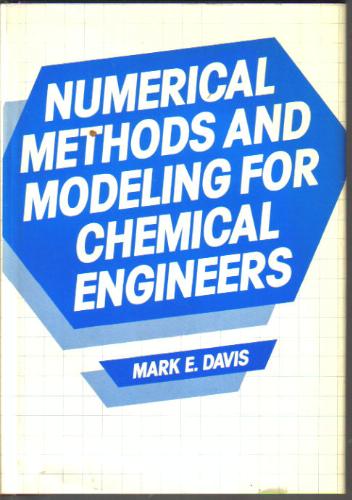
Numerical Methods and Modeling for Chemical Engineers
by Mark E. Davis
Publisher: John Wiley & Sons 1984
ISBN/ASIN: 0471887617
ISBN-13: 9780471887614
Number of pages: 267
Description:
This book is an introduction to the quantitative treatment of differential equations that arise from modeling physical phenomena in the area of chemical engineering. It evolved from a set of notes developed for courses taught at Virginia Polytechnic Institute and State University. Although the subjects covered in this book are the same as in other texts, the treatment is different in that it emphasizes the methods implemented in commercial software. The aim is to provide an understanding of how the subroutines work in order to help the engineer gain maximum benefit from them.
Download or read it online for free here:
Download link
(7.7MB, PDF)
Similar books
 Membrane Filtration Processes
Membrane Filtration Processesby Michel Jaffrin - Bookboon
This book describes the various filtration processes using membranes such as microfiltration, ultrafiltration, nanofiltration, reverse osmosis. Fluid mechanics concepts are reviewed in order to permit to describe the flow inside filtration modules.
(9122 views)
 Bioethanol: Science and technology of fuel alcohol
Bioethanol: Science and technology of fuel alcoholby Graeme M. Walker - BookBoon
Biofuels play significant roles in decarbonisation of our future energy needs. This book provides a timely overview of biomass-to-bioethanol conversion technologies and is aimed at undergraduate students of biological and environmental sciences.
(17635 views)
 Process Control Fundamentals
Process Control Fundamentals- PAControl.com
Precise control of level, temperature, pressure and flow is important in many process applications. This book introduces you to control in process industries, explains why it is important, and identifies the ways in which precise control is ensured.
(18048 views)
 Nanoparticles for Catalysis
Nanoparticles for Catalysisby Hermenegildo Garcia, Sergio Navalon - MDPI AG
This book illustrates the width of applications of metal nanoparticles in catalysis. It covers metal nanoparticles preparation using natural biomolecules to the catalytic, photocatalytic and electrocatalytic activity of supported metal nanoparticles.
(8384 views)